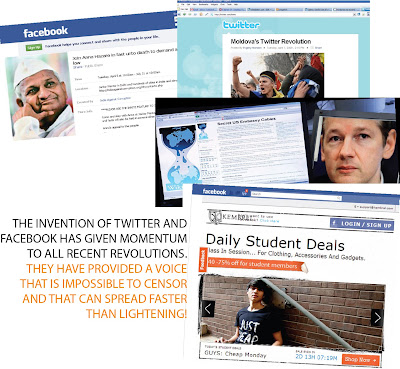D for Distribution
What would be the end result of a terrific Product, fantastic Pricing, and an out-of-this-world Promotional strategy? A flop show! That is, if you forgot the most important factor: Place!
If there is one American invention that has rocked the world and been tried by almost everyone – it’s the ice-cold colas. If there is one war that everyone loves to watch – it’s the cola wars – between Coke and its long standing arch-rival Pepsi. While “blind tests” done time and again have revealed that not many consumers can differentiate between the taste of Coca-Cola and Pepsi once they are blindfolded, then how come it’s been such an uphill task for Pepsi to defeat Coke? In America, it’s someone else who is holding the strings of this old battle – it’s McDonald’s. Strange but true, if McDonald’s (which only sells beverages of the Coca Cola Company) decides to sell Pepsi instead of Coca Cola, then it would not take long for Pepsi to finally defeat Coke. Since 1955, McDonald’s has exclusively sold Coca-Cola products. It has offered Coca-Cola beverages with all its meals and combo offers.
However, with consumers becoming more health-conscious, the consumption of carbonated beverages seems to be decreasing and of water and sports drinks to be increasing. The non-carbonated drinks category has become the strong hold of Pepsi with its extremely popular brands like Gatorade, Tropicana and Mountain Dew. Guess whom are they turning to, to ensure their grasp on the market remains – yes, McDonald’s! With hardly any growth in the carbonated soft drink market, it seemed a win-win situation for McDonald’s too. So, for the first time in history McDonald’s has quietly started offering non-carbonated beverages made by Pepsi at some outlets in US. Has the time come for Pepsi to wear the crown of the market-leader?
With products becoming almost similar and pricing too being more-or-less the same, today the biggest ‘P’ of 4Ps – (Price, Product, Place & Promotion) is “Place”. Yes, with McDonald’s becoming the new battleground for the colas, it shows that distribution holds the key to success in most product offerings.
The fountain of success
The most innovative ways of distribution have been developed by the Cola companies. They introduced the vending machines which soon became very popular and gave a boost to their sales. Vending machines suddenly made it so convenient to buy products you would hesitate to pick up otherwise (like condoms). Of course, they also made cigarettes and alcohol easily accessible to the youth. Today vending machines are selling just about anything and everything. Companies are quickly realising the potential of new distribution techniques. In the United States, sales through snack and beverage vending machines grew by 150% over a ten-year period reaching $35 billion annually in 1999.
Apple even started distributing its iPods and other products via vending machines. From digital cameras to batteries to other accessories, all were available in a single vending machine. Who would have thought a whole store could be shrunk into a staff-less 6-foot wide space!
Like the vending machine, the “soda fountain machine” is the very heart of Coke’s US strength and the major reason for Pepsi’s weakness. It’s the fountains business, which accounts for nearly all the difference in the 12 to 13 share-point lead Coke has over Pepsi (in US). About 25% of soft drinks sold in the US are dispensed by fountains (at McDonald’s, Pizza Hut etc). It just goes on to show that good and unique distribution channels can really become a brand’s “fountain” of success.
The modern age vending machine
That’s what the “Internet” is being called today. A select-and-send is all you need to do to buy things today. The whole music industry is changing. The internet has made music available at the click of a mouse. Youngsters are hardly buying CDs and music cassettes – it’s all there on the internet now.
The favourite shopping destination seems to be fast becoming the internet. No wonder Air Deccan decided to tie-up with Reliance Webworld to make air-tickets more accessible. Now, all you need to do is log on to the website, buy a ticket online, take a printout and fly. According to Sachin Bhatia, Co-Founder and Chief Marketing Officer, Makemytrip.com, approximately 10,000 air tickets for domestic travel are being sold online every day!
Not just plane tickets, movie tickets are also available online. Log on to the PVR website, choose your movie, your show timing and even where you want to sit!
Banks are using the internet to increase both their business and customer satisfaction. Day or night, you can get your queries answered, you can check your account and do a whole lot of other transactions – all thanks to the net. The customer is looking for convenience and instant gratification and if companies can work out innovative and unique strategies to make their product reach out and be visible to the consumer, their sales are bound to increase.
The ‘Retail Revolution’ is all about distribution
Wal-Mart is not just a retail-wonder but also a classic example of a well-developed and well managed supply chain. Wal-Mart’s sophisticated distribution system and information technology to track inventory has significantly improved its efficiency and productivity – making it far more profitable than other retailers. With India sitting on the brink of a retail revolution, supply-chain management will soon have a prominent role to play. “Convenience” is the key word that consumers are looking for. Not surprising then that the very appropriately named “In & Out” stores at petrol pumps have become serious businesses for petrol companies worldwide. From BP to Shell to Caltex, all have very profitable convenience store chains the world over. Who thought that some day you’d get your laundry, your fast food, your calling card, your courier, and all at a petrol pump! When ITC entered into the biscuit business, it knew that if it had to make a place for itself among giants like Britannia and Parle, then apart from offering a large variety of products, it had to have a distribution network. It’s common knowledge that the FMCG products distribution channels are very important. So ITC used its old distribution network and soon all paan-beedi shops had stocks of biscuits too! Today, ITC has made a place for itself in the Indian biscuit business. Its brand is now available in nearly 1.8 million outlets – a little more than the 1.5 million outlets of Parle.
Dell’s unique distribution system (direct to home) helped it to gain a stronghold in the PC market. It helped it to reduce costs (no warehousing costs or middle man cuts) and overtake Compaq, which commanded a large market share.
From banks to biscuits to booking tickets, all have found a new way to destroy competition – a unique distribution strategy. If you want to stay ahead and retain your customer, you need to delight him with innovative ways – and in this case, it’s no big mystery... Just dial D for distribution!


Comments
Post a Comment